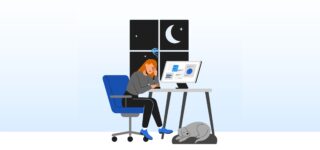
Three Things Every Engineering Manager Must Focus On
Becoming an engineering manager may seem daunting if you’ve spent the better part of your career honing your technical skills. In this post, Pilot CTO, Jessica McKellar, shares her experience in the engineering management field and the important lessons she learned on her journey—from being a team lead to a technical leader.
She distills her experience into simple ideas to help technical leaders become successful.
According to McKellar, as an engineering manager, there are three things you need to focus on:
- Directly supporting the people in your team
- Managing the execution and coordination across teams
- Observing and evolving the processes as the company and team grows.
How can an engineering manager directly support their team?

How engineering managers can support their teams
As an engineering manager, you have to ensure that your team members are functioning efficiently.
How? By focusing on two things: Your engineers’ day-to-day and year-to-year.
And as a leader, it is your responsibility that their day-to-day front aligns with their year-to-year goals.
While taking care of your organization’s requirements, you can assign engineers projects that help them succeed in dimensions they care about.
But to find the right opportunities for your engineers, you need to identify their career goals and take them into consideration while devising their role in the company.
Here are three questions that McKellar highlighted to get a better understanding of your engineers.
- What skills do they want to improve?
- What technical and non-technical experiences are they seeking?
- How do they want to increase the scope of their impact at the company?
“You may want to know what someone wants to be doing in five years, but that’s a huge ask. And there’s this unspoken pressure to seem like you want to be at the same company,” she says.
To overcome this pressure and encourage transparent discussions, it’s your responsibility as the manager to open the dialogue and talk about your career aspirations. Let them know that it’s okay if they have to eventually go somewhere else or do something different to pursue their career goals. Your honesty and encouragement will empower your team members to open up about themselves.
In addition to transparent discussions, have a framework to recognize what excites people outside their job description.
Let these observations be the basis of conversation with you engineers and help you devise incentives that actually motivate them. Help them realize their career goals and provide a deeper understanding of exactly how your company will help them move forward in that path.
A team’s capacity is directly aligned with the engineering manager’s execution skills

Team’s execution depends on engineering manager’s skills
Every successful engineering manager has transitioned from being an engineer. It is your responsibility to recognize engineers who want to stick to coding and those who want to move into engineering management.
If you can help the people on your team grow their individual capacity, you’ll be able to get exponentially more done, says McKellar.
Trust your technical leaders to do their job and break down, delegate, and execute complex projects by themselves. Give them space to make mistakes and grow from them instead of you jumping in at the first sign of trouble.
Another way to boost your team’s capacity is by supercharging learning. Maintain a balance between new and experienced engineers working together and give them equal opportunities to share their knowledge.
New employees bring fresh perspectives, and experienced employees bring discipline and the company’s culture to a project. And hence, it is important to distribute projects evenly to level up your entire team.
Every engineering manager should empower their team with the right tools and processes
Develop a process that not just lets your team know about the project at hand, but exactly how it will contribute to their future, says McKellar.
Observe and understand how your team members want to grow as engineers. Then, incorporate these insights into your process in a way that matches them with high-impact projects aligning with their career goals.
Provide a productive development environment: This includes giving them access to the right tools and creating a straightforward onboarding process that’ll ensure your new employees can find their bearings smoothly.
Regular check-ins: Create a precise system for feedback to ensure that a long and complex project stays on track. Be proactive about communication and hold unblocking sessions to clear away issues that are hindering their productivity.
Incorporate coding reviews, architectural reviews, and planning discussions into your feedback process to capture granular technical feedback and gain insight from a higher level, says McKellar.
Be transparent: Let your engineers know what’s happening on an executive level. This transparency will give them essential company context and make them feel included and invested in the company.
Organic Motivation: While managers can try to keep their engineers in high spirits all the time, it doesn’t always help. Instead, focus on pairing engineers with the right projects.
Help your engineers look at how the project will impact the company. Realizing their work will be recognized at such a huge scale is a huge motivator. That way, they won’t need much external motivation to get it done to the best of their abilities.
To conclude
While becoming an engineering manager is exciting, managing a team can become scary without the right mindset, insight, and practices. Most of the challenges of becoming an effective engineering manager are personal, not technical.
Take advantage of Jessica McKellar’s decades of experience, and implement her strategies to become a better engineering manager.
But in addition to developing the skills you need to become successful as an engineering manager, having skilled and experienced software engineers in your team is crucial.
If you’re looking to hire skilled remote software engineers for your team, Turing can help.
Turing’s automated platform lets companies “push a button” to hire senior, pre-vetted remote software developers. Access a talent pool of the top 1% of 1M+ developers with strong technical and communication skills who work in your time zone. There’s no risk. Turing offers a free two-week trial period to make certain your developers deliver to your standards.
Source: Review.Firstround
Tell us the skills you need and we'll find the best developer for you in days, not weeks.



















